The “right” fertilizer for our orchids
If you want to get serious about growing orchids, you have to find the important factors such as temperature, light, fresh air, air movement and moisture in the substrate and in your own growing space. If these parameters are suitable for the orchids to be cultivated, the right fertilizer must now be found.
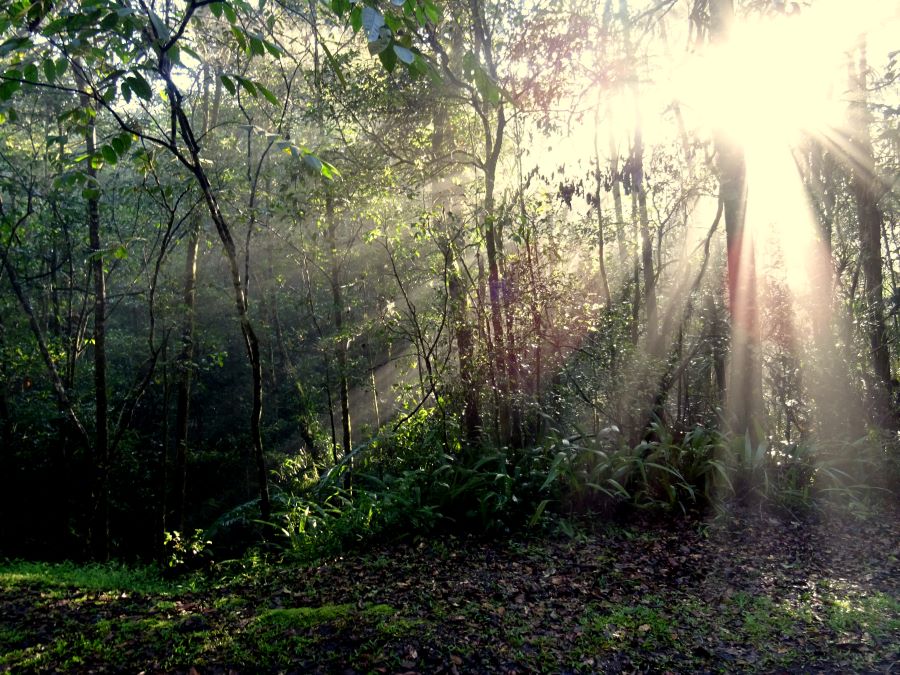
There is a lot of information out there about fertilizing orchids, but much of it is simply inaccurate. Some marketing departments of fertilizer manufacturers promote their orchid fertilizer - but is there even an orchid fertilizer?
In the USA there is the “Magic Orchid Fertilizer”, which was developed in collaboration with Michigan State University (MSU). In fact, it was developed as an all-purpose fertilizer and is used for potted plants, bedding plants, perennials, ferns and conifers. It was never developed specifically for orchids, but has achieved good results in orchid culture there.
This MSU fertilizer is difficult to obtain in Europe, which is why people here like to use the Rain-Mix fertilizer from Akerne Orchideen, which contains similar ingredients. This fertilizer also contains the important nutrients calcium and magnesium. The Akerne company has been using this fertilizer in its own orchid cultures for many years at a dosage of 1g per two liters of rainwater.
Strictly according to scientific criteria, Dr. Wolfgang Ermert has received his “Dr. Ermerts Professional Fertilizer Gold” was developed, which is well suited for all orchids. This fertilizer also contains calcium and magnesium in sufficient quantities. Many hundreds of orchid enthusiasts have now successfully tested this fertilizer on their orchids.
The ingredients of so-called orchid fertilizers are roughly the same as many other fertilizers for other plant species. For many decades, people all over the world have been working with the 17 known macro - and micro-elements that plants need according to common fertilization theory.
Supported by recent research, it is slowly becoming clear that plants absorb many more substances from the soil than previously assumed. This also includes a large number of rare earth elements. These are elements that occur in very small amounts in almost every type of soil.
Because of this progressive insight, researchers and some farmers alike have begun enriching their farmlands with stone dust. Many positive experiences were gained with this. Stone powder contains trace elements that cannot be found in any conventional fertilizer analysis. However, stone powder in the soil must first be broken down by humus components and/or microorganisms. If you want to use stone dust for your orchids, it should be very finely ground and create a neutral pH value in the irrigation water.
A similar wealth of trace elements can only be found in seawater, for example when fertilized with seaweed extracts from the sea. The salts used to produce suitable water for saltwater aquariums also contain trace elements that have rarely been used in plant fertilization.
In orchid cultivation, we are always asked the question to what extent foliar fertilization can support the growth of orchids. Finally, minerals are usually absorbed through the roots.
Scientific studies repeatedly confirm that the leaves can also make a significant contribution to the plant's nutrition. The leaves of most plant species (including orchids) are actually very suitable for absorbing water, amino acids and minerals.
In the dark rainforests, low-growing plants receive very little direct sunlight. As a result, photosynthesis is at a low level and these plants produce little sugar for growth and release through these roots to soil organisms, which in return provide nutrition to the plants. Nevertheless, these plants survive by actively absorbing amino acids, minerals and even humus fractions through their leaves. This natural foliar fertilizer comes from the upper layers of the forest, where fine (organic) dust particles, dead insects, bird droppings, algae and mosses accumulate. Cyanobacteria also grow in the mosses and are able to fix nitrogen from the air.
When it rains, these particles are released and fall onto the plants below as foliar fertilizer.
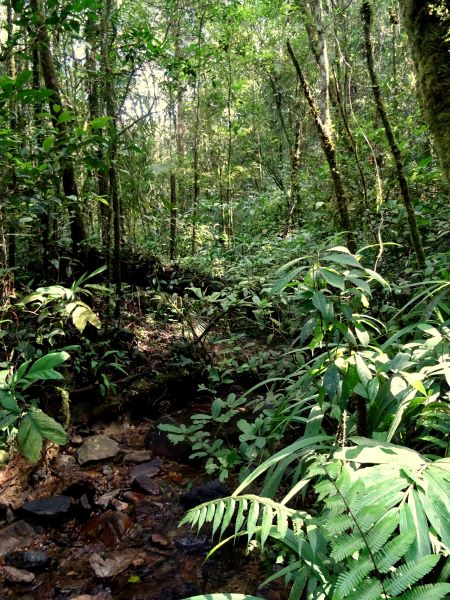
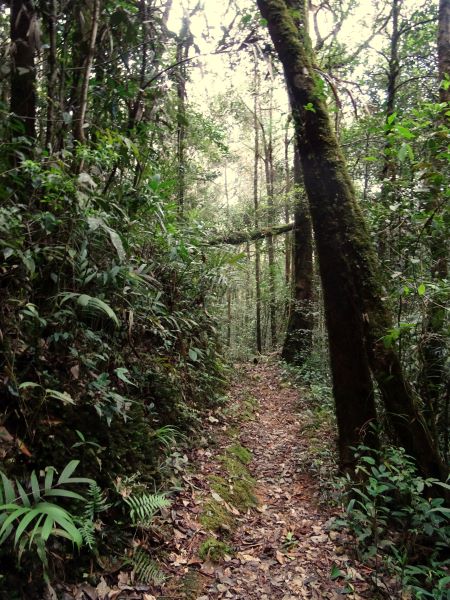
If we want to use such organic substances in orchid cultivation, they must be largely biologically implemented. This means that they have been previously composted or fermented.
Furthermore, it is now known that over 95 percent of the plants in the rainforests are actively supported in their nutrition by mycorrhizal fungi. In this symbiosis, both partners benefit - with a huge network of roots, the fungi look for food for the "higher" plants and in return receive sugar via the roots of the plants as a "quid pro quo".
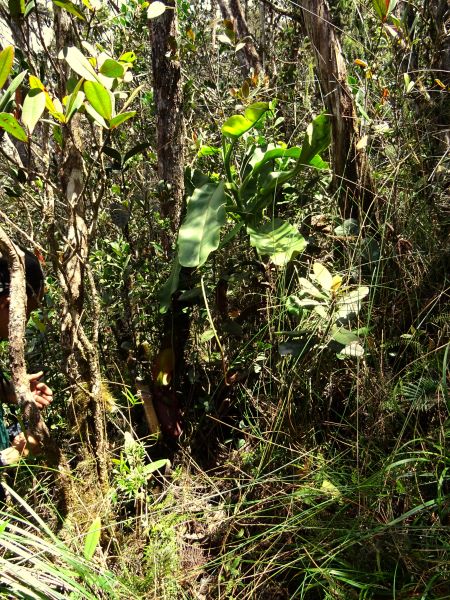
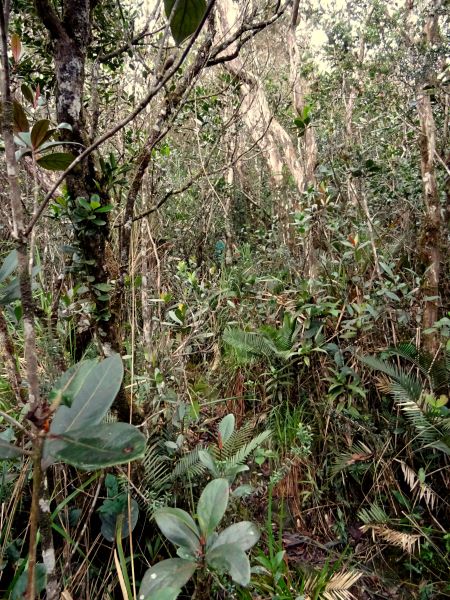
However, such symbioses are very difficult to recreate in our cultural areas and cannot be controlled. On the island of Madeira, some orchid people cultivate their plants in such natural conditions and feed them exclusively with compost extracts. Many orchids are also cultivated according to this pattern in Asia.
I also tried feeding my orchids in the GWH with humus extracts etc. - but I didn't get good growth.
Maybe it's because our orchids are already used to nutrient salts - all offspring come from in vitro cultures in which the plants receive nutrient salts after germination.
We should therefore support the growth of our orchids with regular mineral fertilization.
The nutrient supply and thus the growth potential of crop plants depends heavily on their nitrogen supply. Nitrogen is considered the engine of plant growth; without it, the other main nutrients and trace elements are not used or are only used insufficiently. For this reason, special attention must be paid to nitrogen and the type of nitrogen. For a long time, only ammonium and nitrate were mentioned as common nitrogen sources for plant nutrition. Recent research has shown that most plants can also absorb urea and amino acids directly through the roots and leaves.
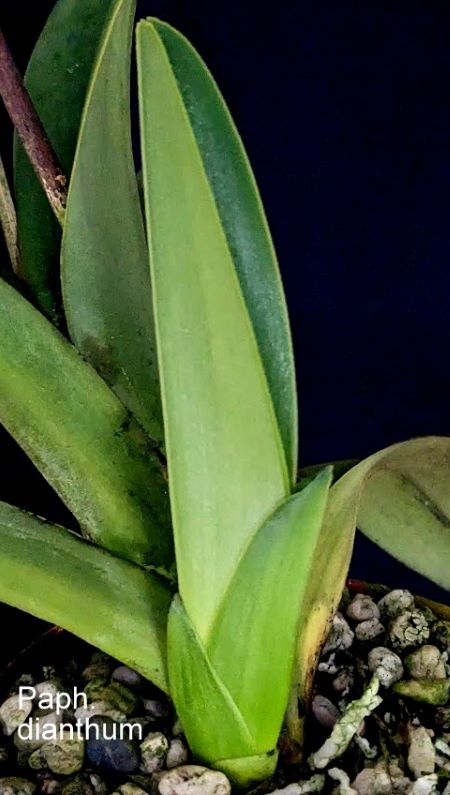
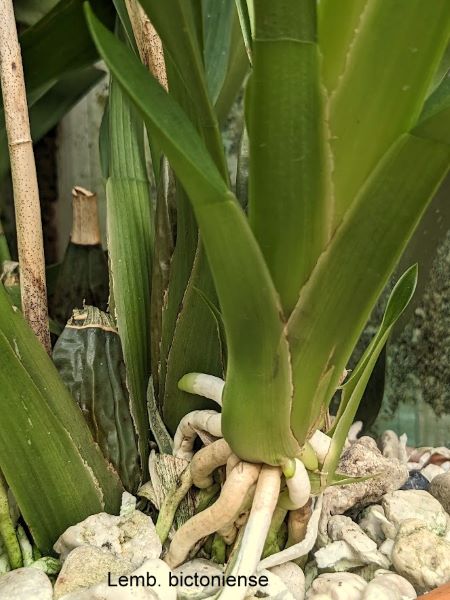
What is fairly “new” in orchid culture among us orchid lovers is the regular fertilization of orchids with calcium - but there is already a separate article about this on my homepage - https://paphs.de/de/kultur/kalk-fuer-paphiopedilum.
Anyone who takes a closer look at the topic of plant nutrition will quickly be confronted with the term “growth-accompanying fertilization”. Let's take a look at the growth cycle of an orchid:
Most orchids go dormant during the winter months. In spring the number of hours of sunshine slowly increases again and it finally gets warmer again. Most orchids will now grow fresh roots. Root formation can be supported well with phosphorus-based fertilization.
Once enough roots have been formed for the orchid to feed on, the plant's new growth will slowly become visible. The growing season begins and the growth of the plant should be supported with a nitrogen-based fertilizer.
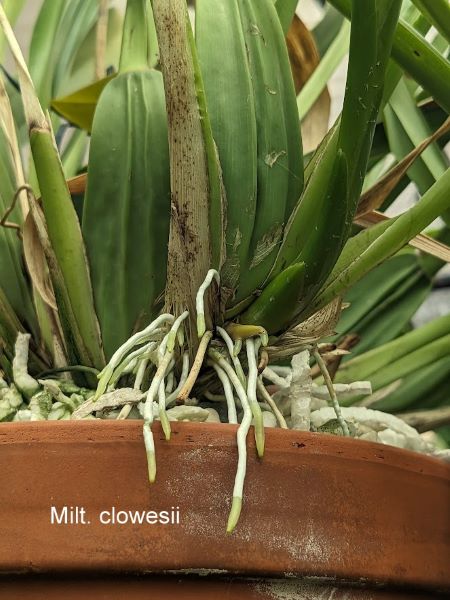
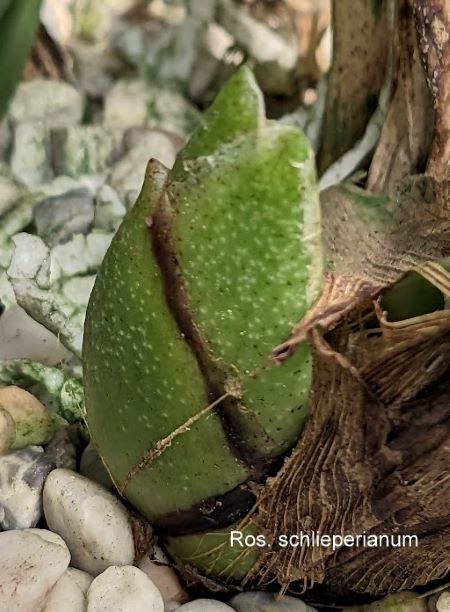
In autumn, the new shoots of many orchids have reached their final size and bulbs are predominantly formed. Many orchids are now forming new roots. Now it's time to reduce nitrogen in fertilization.
The trade now offers us a so-called flowering fertilizer with little nitrogen and higher proportions of phosphorus and potassium - this effect has not been proven for orchids or other plants.
Rather, the induction of flowering is triggered by changes in the amount of light and temperatures. A group of genes in the plant is responsible for this - the so-called florigens. To put it simply, these genes sense the changes in the amount of light and stop the growth of the plants and initiate flowering. In addition, every plant has a genetically determined flowering time. However, if this flowering time is accompanied by temperatures that are too high, humidity and sufficient nutrition in the form of nitrogen, the plant will sprout again and not bloom.
There is a wide range of plant fertilizers and orchid fertilizers available - but which fertilizer is the right one? A good fertilizer declares its ingredients - e.g. Peters Fertilizer 30-10-10 - but what does this information mean and can I derive a dosage from it?
In the present example this means that it contains 30 percent (%) nitrogen (N), 10% phosphorus, 10% potassium (K) and trace elements. If you look closely, this information is not correct - the proportion of P is shown as P2O4 in percent (= actually only 4.4% P) and the proportion of K is also shown as K2O in percent (= actually only 8,2% K).
For the sake of clarity, we will leave it at the first statement. If you read fertilizer recommendations, the conductivity or an EC value is quickly mentioned. The conductivity measures all salts present in the water - including the salts from the original water (e.g. tap water). When fertilizing orchids, it is therefore advantageous to use rainwater or osmosis water with a low conductivity value.
It is difficult to determine the level of conductivity based on the fertilizer salts used. In the Peters/Scott fertilizer mentioned here, for example, 24.6% urea, 3.3% nitrate-N and 2.1% ammonium-N are used as nitrogen sources. Since urea does not increase the conductivity, a dosage of 1 g per liter of rainwater results in an increase in conductance of approx. 500 µS (EC 0.50).
With this dosage I would add 300 mg N, 100 (44) mg P and 100 (82) mg K to the rainwater.
Various research studies have found that a nitrogen content of 100 mg (equivalent to 100 ppm) weekly in the fertilizing water produces a well-cultivated phalaenopsis that blooms regularly. Increasing the level to 200 mg N actually results in larger plants and more flowers. However, values above 200 mg N can have a detrimental effect on Phalaenopsis, while cymbidiums tolerate such fertilizer concentrations well.
We hobbyists should maintain values between 100 and 150 mg N during the growth period, which are also well tolerated by most Paphiopedielen. It is generally difficult to give a correct fertilizer height, especially since we may use Paph. niveum in our cultivate next to Paph. rothschildianum.
In order to follow the fertilizer recommendation just mentioned, I could use 0.5 g / liter of the above-mentioned Peters/Scott fertilizer and then have, for example, 150 mg N with a conductance of approx. 250 µS (EC 0.25).
The use of urea as an N source is always controversial:
It is scientifically proven that orchids cannot absorb urea and utilize this nitrogen. In the substrate, the urea must first be converted into ammonium and then into nitrate by nitrifying bacteria before it can be used by the plants. In addition, the use of urea and ammonium leads to acidification in the substrate, while nitrate tends to increase the pH value in the substrate.
But there are also reliable voices that orchid roots can actually utilize urea directly. It is believed that orchids developed this ability to better utilize the decomposing organic matter in their natural habitat.
When nitrogen is absorbed through the leaf, urea is significantly ahead of the absorption of ammonium and nitrate. Many foliar fertilizers therefore contain a large proportion of urea as a nitrogen source.
When evaluating a fertilizer, I should always look at the ingredients. For example, if I take 1 g/l of Peters/Scott 20-20-20, I get a conductance increase of 900 µS (EC 0.9) - the plants then receive 200 mg each of N, P and K. I only want 100 or 150 mg If I have N, I have to use a correspondingly lower dosage of fertilizer.
But if I now use the above-mentioned Rain Mix fertilizer (11.8-2.7-13.7-11.8-3.5) with e.g. 1g/l, the conductance increases to approx 1200 µS (EC1.2) - that Plants are now supplied with 118 mg N - but with a high conductance value, which quickly puts strain on the orchid substrate if this fertilizer is used frequently. This fertilizer does not contain urea, which is why it produces this high conductivity.
The Akerne company therefore recommends dosing the fertilizer with 1 g per 2 liters of rainwater and then only receives 59 ppm N. However, you could also distribute the weekly ration of 118 mg N mentioned here over three watering or spraying processes and then have 3 x 40 ppm N or 400 µS each. This more frequent watering/spraying is also much closer to the water supply for orchids in nature.
The different increases in conductivity with almost the same nitrogen supply to the plants are due to the fact that some fertilizers predominantly use urea as a nitrogen source, while other fertilizers only use ammonium and nitrate as a nitrogen source.
Reality shows us that orchids grow properly with a range of fertilizers. However, unnecessary nutrients are at best washed out of the pot or accumulate in the plant material. In my culture, the repeatedly suggested flushing of the plant material with rainwater resulted in little or no reduction in the conductance value in the plant material and toxic levels were quickly reached in the substrate. The orchids then stop growing and urgently need to be repotted.
In my greenhouse, the orchids are regularly watered or sprayed with a conductance of a maximum of 250 µS. At a higher dosage, the green root tips of some plants quickly withdraw. At higher temperatures in summer, water once a week and additionally spray with fertilizer up to twice.
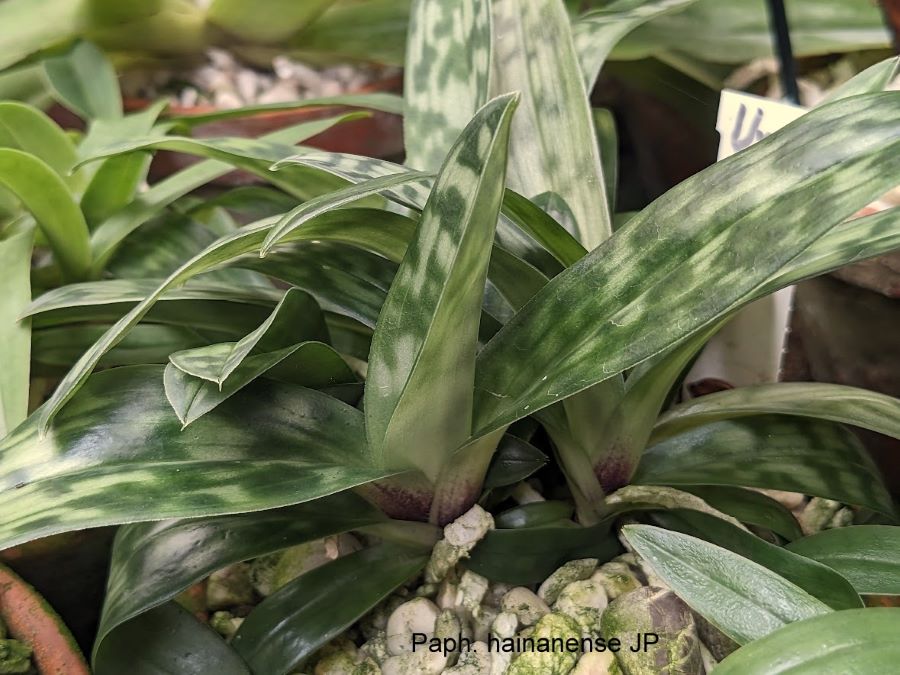
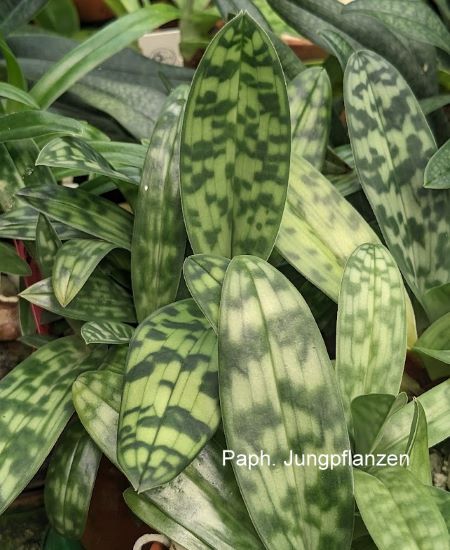
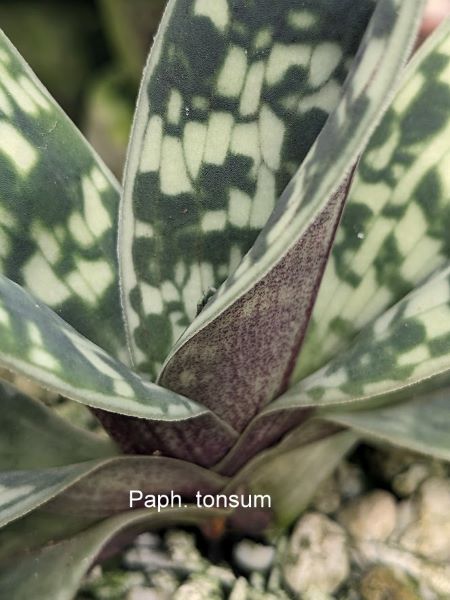
If you read the culture instructions in the various media, it is often reported that orchids are first watered with rainwater and then with fertilizer. This approach makes no sense.
Epiphytic orchid roots are covered with a relatively thick layer of dead cells called velamen. This velamen acts like a sponge and absorbs the water and its nutrients. Studies have shown that the velamen of a Phalaenopsis root is completely saturated after 60 seconds. Ecologically, this makes sense because the first flush of water from the rainforest canopy is the most nutritious and is quickly absorbed by the velamen. The subsequent water can no longer be stored. If I first water with rainwater and then with fertilizer, the velamen can no longer absorb the fertilizer-containing water.
After these theoretical explanations, I would like to list my current fertilization here. The orchids are watered thoroughly once a week, in winter only every two to three weeks.
Spring → root formation:
alternately 1 g / 3 liters → 10-52-10 = 33 mg N – 173 mg P – 33 mg K → + approx. 260 µS|
or 1 g / 4 liter → Calcinite = 39 mg N + 65 mg Ca → + approx. 275 µS
Summer → growing season:
alternating 1g / 2 liters → 30-10-10 = 150 mg N – 50 mg P – 50 mg K → + approx. 250 µS
or 1 g / 4 liter → Calcinite = 39 mg N + 65 mg Ca → + approx. 275 µS
Autumn → now some Paphios and other orchids form roots again, other plants complete their shoot growth and form bulbs:
alternately 1 g / 3 liters → 10-52-10 = 33 mg N – 173 mg P – 33 mg K → + approx. 260 µS|
or 1 g / 4 liter → Calcinite = 39 mg N + 65 mg Ca → + approx. 275 µS
Winter → although most bulbous plants are now dormant, the summer bloomers of the natural forms of Paphios and Phals grow in winter and need food:
alternating 1g / 2 liters → 30-10-10 = 150 mg N – 50 mg P – 50 mg K → + approx. 250 µS
or 1 g / 4 liter → Calcinite = 39 mg N + 65 mg Ca → + approx. 275 µS
Every second watering in winter uses rainwater without fertilizer.
In warmer temperatures, the orchids are sprayed with fertilizer over the leaves once or twice a week. Various organic agents are used here. During the main growing season, this organic fertilization is supplemented with pure urea fertilizer (1 g / 3 liters = + 135 mg N). The conductance of this fertilizer solution rarely exceeds 250 µS.
If the next day's temperature exceeds 30°C, only rainwater is used for watering - from this temperature onwards, most orchids can no longer absorb fertilizer.
I have had good experiences with this fertilization in the 2022 and 2023 cultural years so far. Nevertheless, there are always orchids that simply don't want to grow in my culture or grow rather slowly.
This is often related to the pre-culture of these plants; my fertilization may be missing a nutrient element that was previously used. So I couldn't use Paph for a few years. cultivating esquirolei from a certain dealer - today I know that calcinite was regularly used there. On the other hand, since the use of calcinite, some coelogynes no longer grow properly.
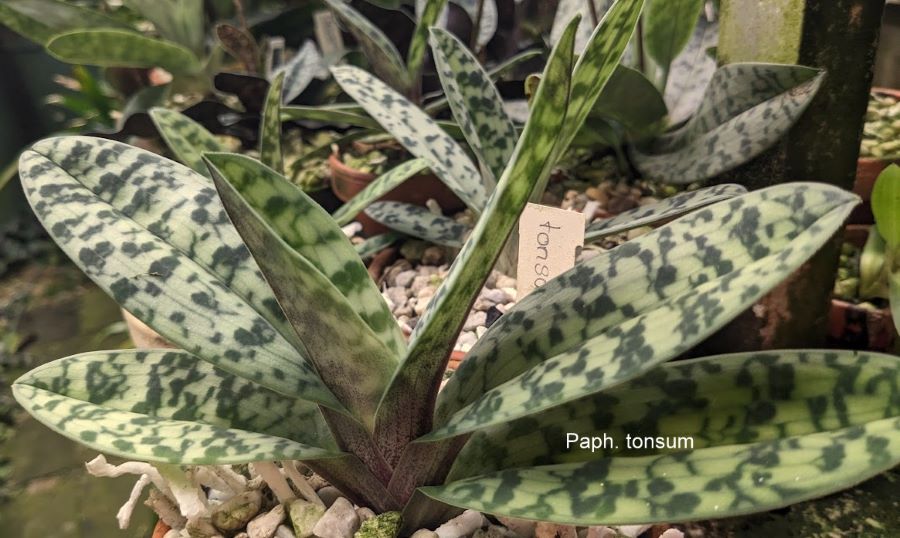
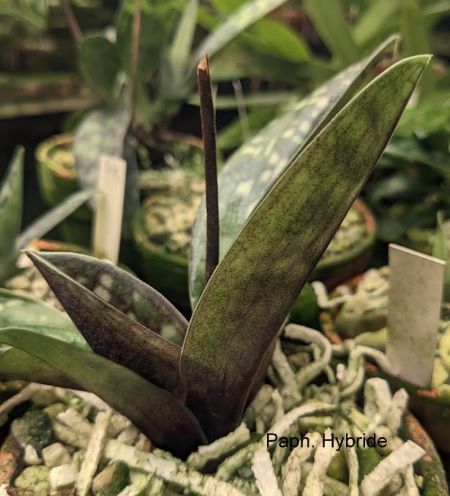
Furthermore, it is often read that orchids should be repotted into their own substrate immediately after purchase. In my experience, this is not a good idea. The newcomers should be slowly adapted to their own culture conditions and this works best with the substrate from the previous culture.
Ultimately, fertilizing our orchids is always a balancing act between adequate nutrition for the plants (especially with nitrogen and calcium) and the resulting conductivity values due to salt accumulation in the substrate.
If you need more information on the subject of fertilization, I can only recommend Ray Barkelow's excellent homepage:
https://firstrays.com/plant-nutrition/


